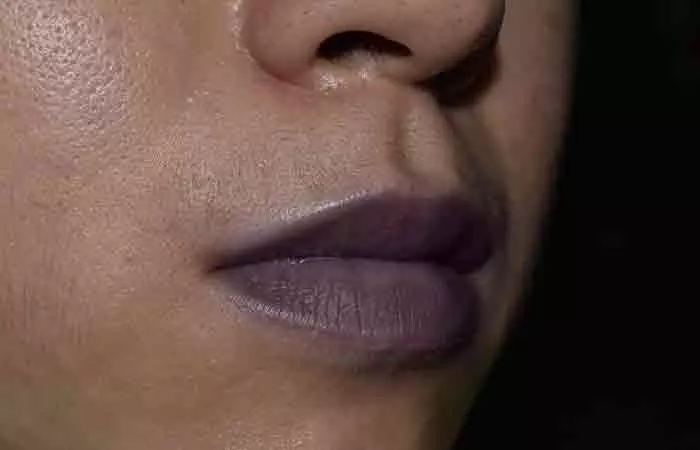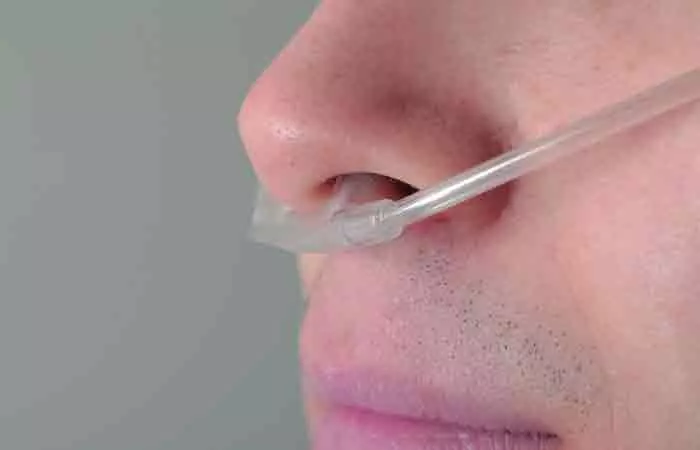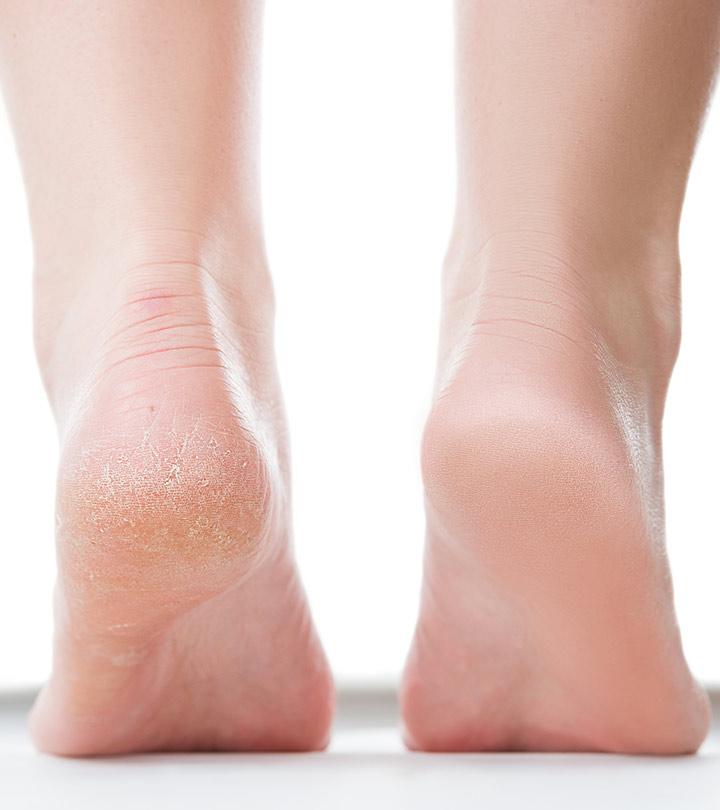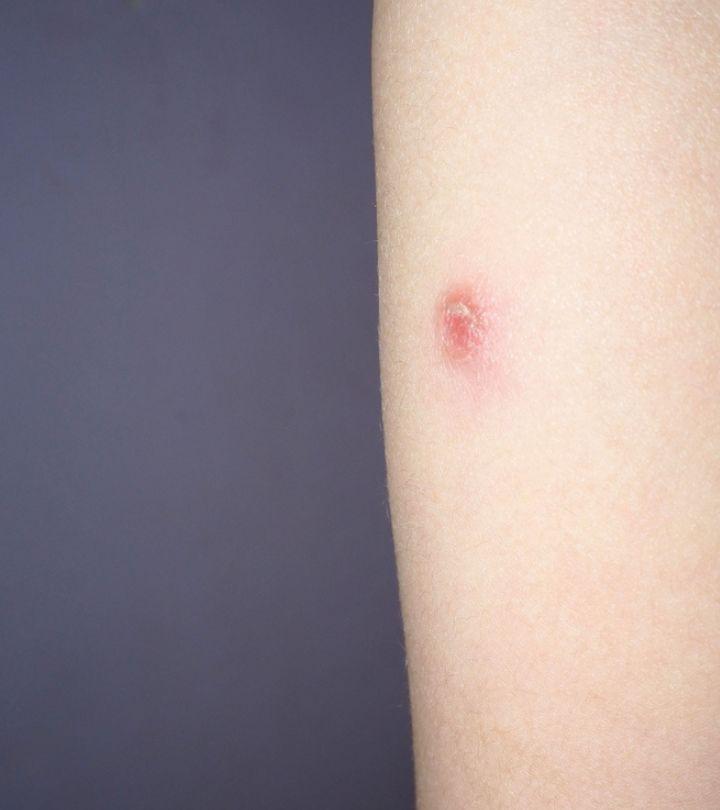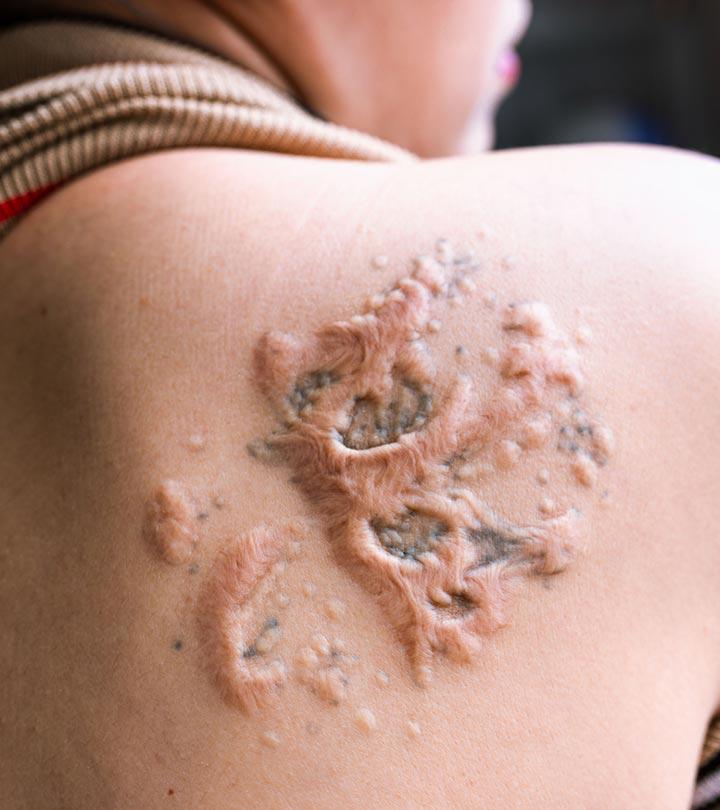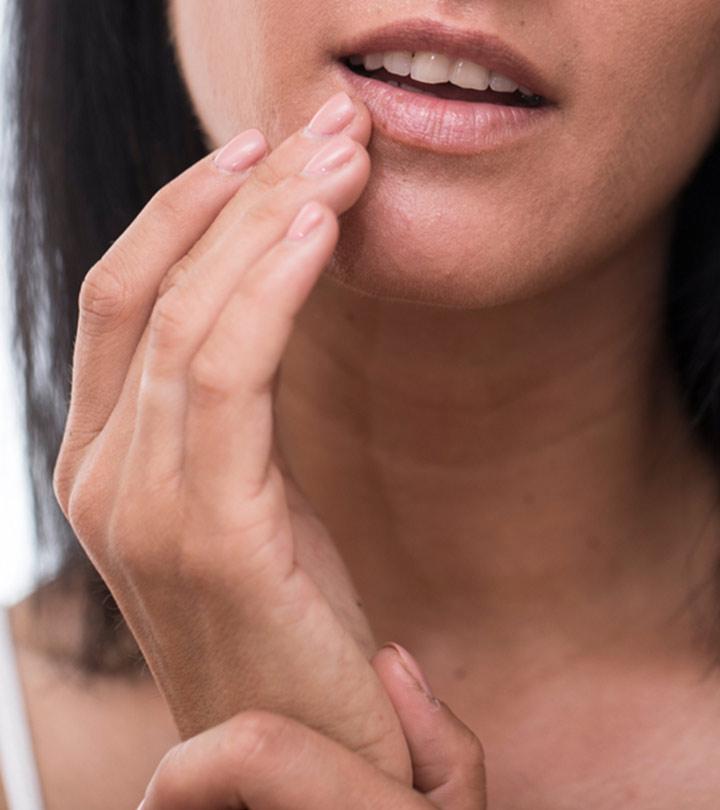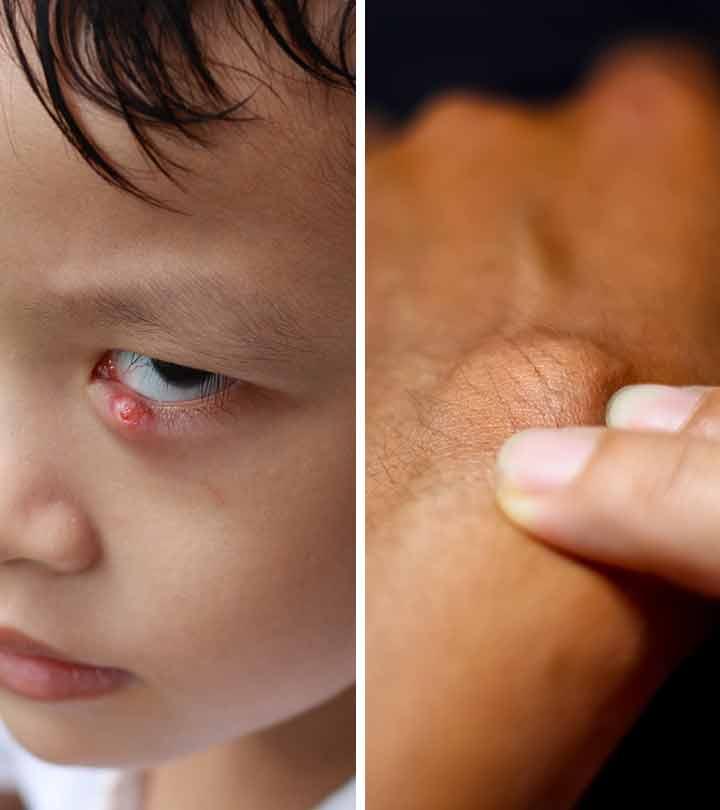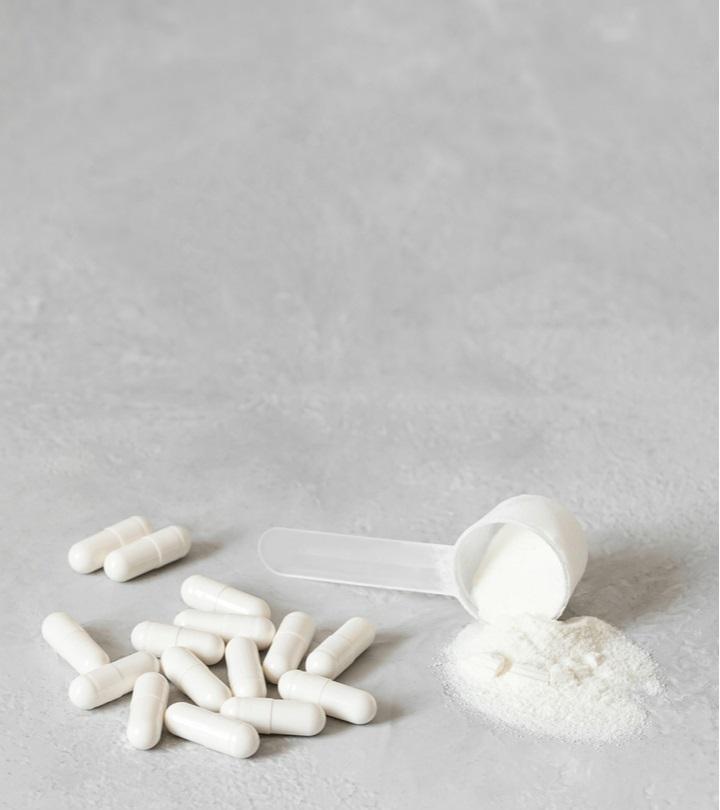Cyanosis (Skin Discoloration): Causes, Signs, And Treatment
Blue, purple, or gray skin color could mean serious health complications.
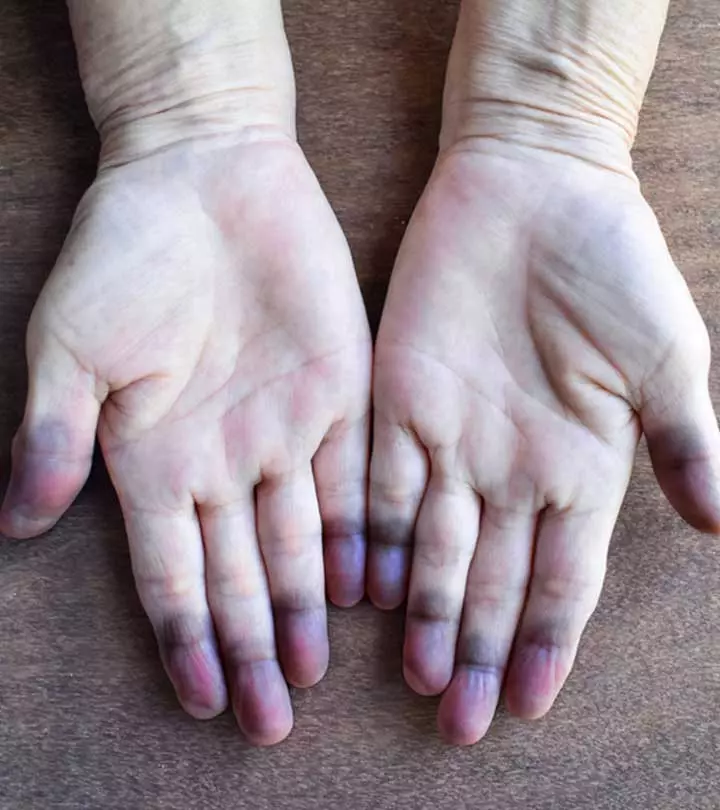
Image: Shutterstock
Have you ever noticed a bluish or gray discoloration on the skin? It could denote cyanosis, a skin condition that occurs if you have serious health issues associated with the heart or lungs. This condition usually warrants immediate medical attention and must not be ignored.
Here, we discuss cyanosis, its causes, signs, and symptoms, and the treatment options available to reduce the risk of complications. Keep reading.
 Fun Fact
Fun FactIn This Article
What Is Cyanosis? What Are Its Types?
Cyanosis is a pathologic condition where your skin becomes blue, grayish, or purple due to insufficient oxygen in the bloodstream. Cyanosis indicates inadequate oxygen delivery to the peripheral tissues. It also occurs due to increased oxygen extraction by the tissues (1). It can affect your fingers, toes, nails, earlobes, mucous membranes, lips, and skin.
Cyanosis is divided into two categories:
- Central Cyanosis: It is bluish discoloration found on the body, mouth, head, and torso. It occurs when the deoxygenated hemoglobin level is below 5g/dL with oxygen saturation being below 85% (1).
- Peripheral Cyanosis: It occurs due to the body’s inability to deliver oxygen-rich blood to the peripheral tissues (2). Fingers, toes, and nail beds become blue or purple. It can happen due to congestive heart failure or shock. It can also occur due to exposure to extremely cold temperatures.
Acrocyanosisi A persistent, painless disorder that causes bluish discoloration on the skin due to lack of oxygen and spasms in small blood vessels. is a form of peripheral cyanosis that is more prevalent in children and adults younger than 30 years (3). It resolves within the first few days of life. Risk factors include cold climate, outdoor activities, and a low body mass index.
 Trivia
TriviaCyanosis can also mean there is a serious issue with the lungs, heart, or circulatory system. But what causes this skin condition? Know more in the next section.
What Causes Cyanosis?
Lack of enough oxygen in the blood turns skin bluish-green or bluish-purple. Some of the life-threatening causes of cyanosis are:
- Chest wall injuries
- Obstruction of the airways
- Heart failure or congenital heart diseasei A birth defect with one or more issues of the heart structure that affects the normal functioning of the heart.
- High blood pressure in the lungs
- Blood clot in the lungs
- Suffocation or shock
- Presence of methemoglobin in the blood due to methemoglobinemia (caused by drugs or toxins) (1)
Health issues related to the heart, lungs, or blood can cause cyanosis. You may also experience cyanosis if you have a long-term health condition like:
- Asthma
- Pneumonia
- Severe anemia
Other causes of cyanosis include:
- Overdose of medications
- Beta-blockers (medications used to manage high blood pressure), which may affect blood circulation (4)
- Raynaud’s syndromei A medical condition that causes numbness of toes, nose, or ears due to the response of smaller arteries to cold temperatures.
- Exposure to poisons like cyanide or carbon monoxide poisoning
- Extreme cold conditions
- Wearing tight clothes or jewelry
All newborn babies have central cyanosis until up to 5 to 10 minutes after birth. Seek medical help if you notice bluish discoloration in your newborn after the stipulated time. Cyanosis in children may be the result of heart or respiratory distress during birth. Children with congenital heart diseasei A birth defect with one or more issues of the heart structure that affects the normal functioning of the heart. require regular immunizations to prevent infections. Some may even need a permanent pacemaker.
It is evident that most of these conditions can lead to serious health issues. Hence, you must know the symptoms of cyanosis to treat it promptly.
Signs And Symptoms Of Cyanosis
The common symptoms of cyanosis are bluish, grayish, or purplish color changes to the skin. Detecting these color changes is easier in those with a lighter skin tone. However, those with dark skin must watch for purplish color changes on their lips, tongue, gums, nail beds, and around the eyes.
In serious cases, one may experience:
- Chest pain
- Breathing issues
- Frequent headaches
- Sleepiness
- Confusion
- Fever
- Coughing up dark-colored mucus
Seek immediate medical help if you notice any such symptoms. Your doctor will identify the type of cyanosis and treat it accordingly.
Michelle, a blogger, shared her experience of dealing with cyanosis during Covid. She writes, “I ended up back in emergency, in the middle of the night, because my lips had started to turn blue around the edges, as did my nail beds. I knew this was a sign of cyanosis, and didn’t want to take any chances (i).”
Diagnosing Cyanosis
Your doctor may diagnose the condition by a physical examination. You may also be asked about your medical history and details about the symptoms.
Your doctor may examine your cheeks, nose, ears, and oral mucosa as the outer layer of the skin is very thin and has generous blood supply (1).
Understanding the type of cyanosis present will also help the doctor find out the cause of the condition. They may perform a few tests to:
- Know the complete blood count.
- Measure the oxygen levels in the blood.
- Measure your heart’s electrical activity.
- Check if you have pneumonia or other pulmonary issues like pulmonary embolism.
Keep reading to learn more about the treatments available for cyanosis.
Treating Cyanosis
Cyanosis may be a symptom of a serious underlying condition, and treating it must be a priority. The treatment may involve:
- Surgery: Cyanosis caused due to congenital heart diseasei A birth defect with one or more issues of the heart structure that affects the normal functioning of the heart. may need surgical intervention.
- Oxygenation: Cyanosis can also occur due to hypoxia. Hypoxia is caused due to a lack of oxygen in the tissues. You may need respiratory support to stabilize this condition.
- Intravenous Fluids: Infants with cyanosis may have difficulty consuming food. They need to be administered with intravenous fluids.
- Medications: The doctor may prescribe drugs depending on the underlying medical conditions. Antivirals, antibiotics, diuretics, or anticoagulants may be recommended.
- Warming Of The Affected Area: Cyanosis caused by exposure to cold, Raynaud’s phenomenon, and acrocyanosisi A persistent, painless disorder that causes bluish discoloration on the skin due to lack of oxygen and spasms in small blood vessels. may be reduced by warming the affected area.
When To See A Doctor?
Since cyanosis is linked to chronic and life-threatening causes, you must seek immediate medical help if you notice any symptoms. Visit a doctor if you develop a bluish tint on your skin, lips, fingertips, or nails that does not fade in 1 to 2 days. Cyanosis often accompanies other symptoms like breathing difficulty, rapid breathing, chest pain, fever, or coughing dark mucus. In such cases, you must seek emergency medical attention.
Want to understand cyanosis? Click on this informative video and delve into the symptoms and causes of both central and peripheral cyanosis.
You can prevent the risk of developing cyanosis by following a few tips. Check them out in the next section.
How To Prevent Cyanosis
You can prevent cyanosis by addressing the underlying causes and maintaining good overall health. Here are some steps to help prevent cyanosis:
- Avoid exposure to cold temperatures as they may reduce blood flow and oxygen delivery to the toes and feet (2).
- Wear warm clothes or use a portable heater when at high altitudes.
- Limit smoking or caffeine intake as they can narrow the blood vessels and reduce their capacity to carry oxygen (2).
- Consume iron rich-foods to tackle anemia as iron helps increase hemoglobin and improves the flow of both blood and oxygen (5).
Cyanosis is a condition in which your skin turns blue, grey, or purple due to a lack of oxygen in your bloodstream. The unsaturated hemoglobin in the blood causes blue coloration. It could be a symptom of a serious medical condition that needs to be treated right away. If you observe discoloration on your body, seek medical attention. Other symptoms include trouble breathing, coughing up blood-tinged mucus, fever, and frequent headaches. Be aware of these warning signals and take action to address them as soon as possible. Prompt action can help you avoid long-term problems.
Frequently Asked Questions
Can low iron cause cyanosis?
Yes, iron deficiency anemia may cause cyanosis if the oxygen saturation falls below normal hemoglobin levels.
Can a pulse oximeter detect cyanosis?
No, a pulse oximeter may not correctly detect cyanosis.
Does cyanosis cause brain damage?
Insufficient oxygen may result in brain damage. However, cyanosis can be a sign of underlying health conditions like hypoxia, which may lead to brain damage.
Can an infection cause cyanosis?
Infections like pneumonia and fever can cause cyanosis.
Key Takeaways
- Cyanosis is a skin condition in which the skin becomes blue, grayish, or purple due to insufficient oxygen in the bloodstream.
- Health issues related to the heart, lungs, or blood can cause cyanosis.
- Cyanosis can be treated with surgery, IV fluids, oxygenation, or warming the affected area.
_causes_signs_and_treatment_illustration.jpg.webp)
Image: Dall·E/StyleCraze Design Team
Personal Experience: Source
StyleCraze's articles are interwoven with authentic personal narratives that provide depth and resonance to our content. Below are the sources of the personal accounts referenced in this article.
i. My Covid Experiencehttps://michellesglutenfreekitchen.wordpress.com/2021/03/04/my-covid-experience/
References
Articles on StyleCraze are backed by verified information from peer-reviewed and academic research papers, reputed organizations, research institutions, and medical associations to ensure accuracy and relevance. Read our editorial policy to learn more.
- Cyanosis
https://www.ncbi.nlm.nih.gov/books/NBK482247/ - Central And Peripheral Cyanosis
https://www.ncbi.nlm.nih.gov/books/NBK559167/ - Acrocyanosis: An Overview
https://www.ncbi.nlm.nih.gov/labs/pmc/articles/PMC3827510/ - Selective Beta-1-Blockers
https://www.ncbi.nlm.nih.gov/books/NBK499982/ - Dietary Iron
https://www.ncbi.nlm.nih.gov/books/NBK540969/
Read full bio of Dr. Sameeksha Chand
Read full bio of Anjali Sayee
Read full bio of Monomita Chakraborty





